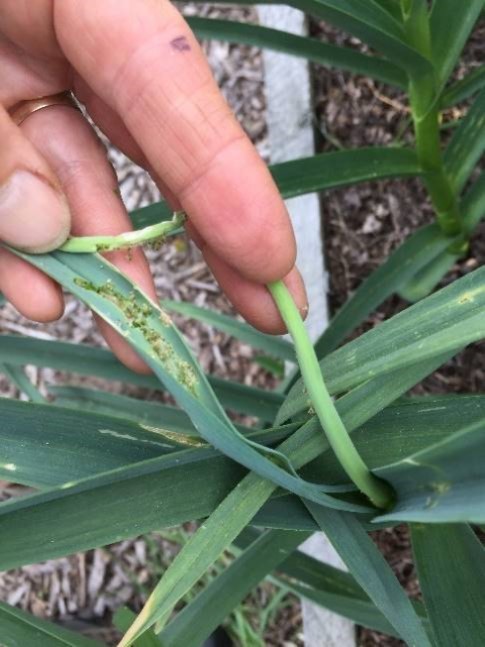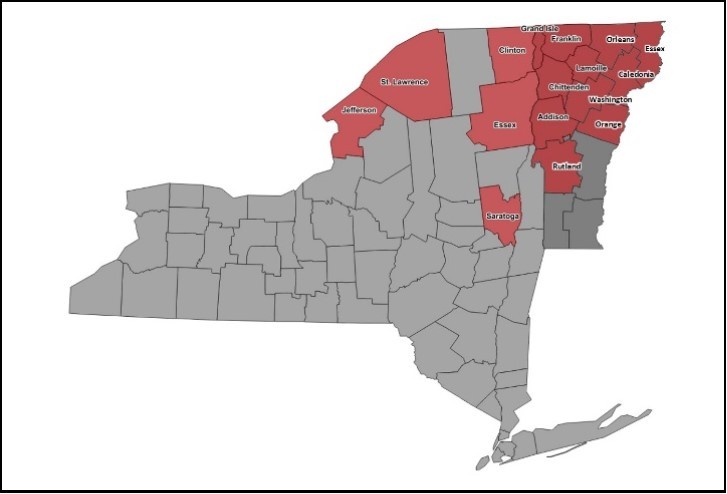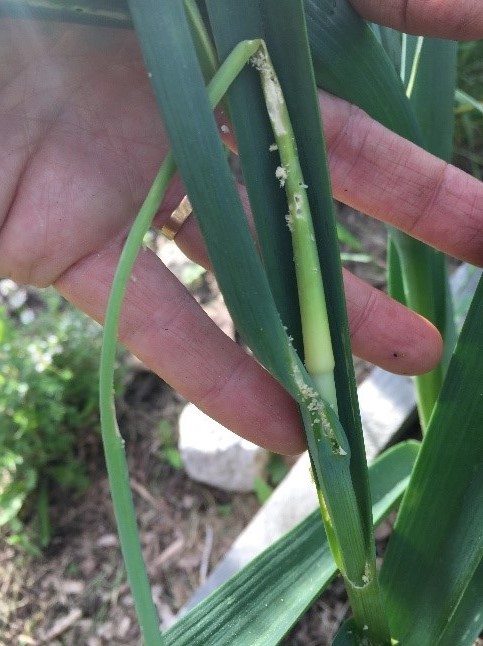Lookout for Leek Moth
Amy Ivy, Vegetable Specialist
Eastern New York Commercial Horticulture
 Early leek moth damage to garlic. Unfold the youngest
Early leek moth damage to garlic. Unfold the youngestleaves near the emerging scape to find the damage
and young caterpillars

Leek moth is a pest of all allium crops: onions, garlic, leeks, shallots and chives. It is widespread through the southern parts of Ontario and Quebec in Canada, northern NY and in recent years, most of Vermont (see map).
Leek moth overwinters as an adult and begins flying in mid-April. This year the first adults were caught in Essex on April 21, in spite of very cold weather the week prior. The adults seek out alliums on which to lay eggs; emerging garlic and onion seedlings are known to be popular sites. Overwintering onions and emerging chives could be likely hosts for these first egg laying efforts as well. Larvae should be hatching in a couple of weeks.
Be cautious when buying and selling onion transplants between growers in the infested areas. We have seen leek moth appear in new locations when infested plants were brought in from other farms. It is not known in the southern US so seedlings from there should not be a concern for leek moth but caution is advised when buying any northern grown seedlings.
Leek moth larvae can do considerable damage to garlic scapes and this is a good first place to look for them when scouting. Look inside folded leaves near the developing scapes as well. There are 2ee labels for Entrust (organic), Radiant, Lannate and Warrior II w/Zeon. Controlling this first emergence of larvae can help protect onions from the second generation of leek moth which is more difficult to control since the larvae are more protected because they feed inside the hollow onion leaves.
 Damage to garlic scape as it emerges
Damage to garlic scape as it emerges

Upcoming Events
Intro to Food Safety and GAPs Training
February 19, 2025
via Zoom,
This virtual workshop will serve two purposes:
- For produce farms just interested in learning about farm food safety, this program will introduce principles and best practices.
- For produce farms look for a GAPs (Good Agricultural Practices) training needed to meet buyer demands for audit/certification, this program will provide that as well.


































